Ads that look like editorial matter are a “necessary evil,” say 45% of those voting in a current poll on this website. They are “unethical,” say 27%. Since stories “with a Mickey Finn in them” are being pushed by New York Times and others, it’s no wonder Facebook is thriving.
An O’Dwyer poll, which ran May 17-24, asked “What is the most influential media entity in the world?” Facebook and NYT both pulled 27% of the votes with Fox getting 19%; AP, 12%; CNN, 12%, and Dow Jones, 3%. No votes were given to Yahoo and MSNBC.
Another relevant poll, by Gallup last year, found that “trust in the media” had plummeted from 69% in 1974 to 21% for TV news and 20% for newspapers. The only segments lower in trust are Congress and “big business.”
|
|
Promoting branded content is the Interactive Advertising Bureau, New York, headed by Randall Rothenberg, president and CEO. Early in his career he spent six years at the NYT as ad columnist, technology editor and politics editor of the Sunday magazine. He was later senior director of intellectual capital at Booz Allen Hamilton and led IAB from 2007-2010, rejoining it in 2011. IAB is at 116 E. 27th st.
Revenue figures also tell a tale. Facebook’s were $17.9 billion in 2015 while NYT’s were $1.57B. Facebook’s Q2 revenues were $6.44B and profits $2.06B while NYT’s revenues were $372.6 million and there was a loss of $211,000.
The New York Post has been predicting sizable NYT layoffs in recent weeks and Vanity Fair’s “Hive” website headlined June 1, “Can Anyone Save the NYT from Itself?”
An O’Dwyer poll was conducted June 16, 2015, after we covered a panel of NYT executives at Hunter College. The poll asked, “What should NYT do to improve its long-term survival chances?” Voting for “Cut price, size” were 39%; “Stay the course” said 31%; “Change Ownership Structure” said 16% and “Ditch print” said 14%.
Panelists were NYT publisher Arthur Sulzberger Jr., executive editor Dean Baquet, and former editorial page editor Jack Rosenthal.
NYT Should Cut Stories, Artwork
Stories that take forever to get to the news are driving readers from the paper wrote Michael Kinsley in The Atlantic.
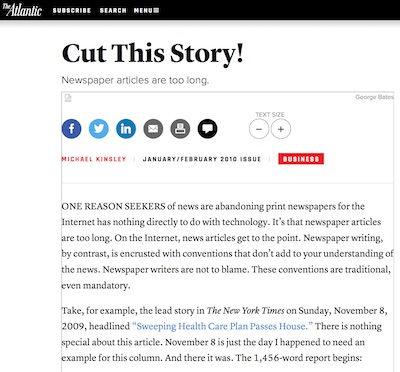 The lavish use of color pictures and art, while eye candy, is something the paper cannot afford. It lost $14.3M in the first quarter of 2015 partly because of a $42.3M pension charge for payments to nearly 100 employees who were offered retirement packages.
The lavish use of color pictures and art, while eye candy, is something the paper cannot afford. It lost $14.3M in the first quarter of 2015 partly because of a $42.3M pension charge for payments to nearly 100 employees who were offered retirement packages.
If NYT wants to be modern, the paper should start putting tinyurl-type links in print stories that provide easy access to previous stories, documents, and databases. Reporter bylines should also show their emails which is standard practice at the New York Post, Newsday and many other papers. NYT writers are too aloof.
The Sulzberger session was a start at facing the public but regular such programs are needed. Flaws were that no photographs by press were allowed and none of the questioners were shown on camera during the half hour of audience participation. Reporters were not among those asking questions, which were mild. One speaker complained about the ditching of the bridge and chess columns. Also ditched was the ad column after more than 70 years.
Facebook Lets it “All Hang Out”
With the newshole in traditional media shrinking as well as credibility, it’s no wonder that PR people are mostly targeting Facebook, Twitter and other social media to get their voices heard.
An example of failure of media cover a key topic, quite possibly because it would be biting the hand that feeds it, is the campaign of health advocates to roll back or at least lessen the dangers from pulsed microwave radiation from numerous sources including cellphones, computers, IPads, routers, celltowers, cordless phones, baby monitors, and Wi-Fi in public places.
The topic is virtually uncovered in the media which beam their coverage wirelessly including ads and also depend heavily on telecom and computer advertisers.
Happily, we are finding major coverage of radiation’s health threats, including a possible link to exploding rates of autism, in Facebook communities. Many O’Dwyer articles are being picked up in full and transmitted throughout the world.
Picked up were the Aug. 3 posting on Katie Singer explaining the “5Gs” of radiation including the latest and most dangerous, and the Aug. 1 posting on “branded” content being boosted by advertisers and some media and blasted by critics including John Oliver of HBO, which does not take ads. The link includes the Oliver segment.
Branded Content Must Be Highly Visible
The O’Dwyer articles have won numerous comments on Facebook from laypeople as well as doctors, scientists, teachers and others including those who have become hypersensitive to pulsed radiation.
This is the kind of discussion that should be in the letters to the NYT and other leading dailies. Jerry Flynn of Canada and others have noted the near absence of the subject in media.
Media need to make very visible and segregated any advertiser-written copy or further loss in trust will result that will drive more readers to social media.
Following is a transcript of the opening remarks of Oliver on branded content.
JOHN OLIVER: Let’s talk about corporate influence in the media and before I do, I am very aware that we’re extremely lucky here on HBO – we don’t have advertisers so if I want to say that, for instance, Cadbury (?) Cream Eggs are filled with dolphin sperm…
AUDIENCE: [LAUGHTER...]…
JOHN OLIVER: …or… or that Old Navy clothing makes you look like a tacky murderer…
JOHN OLIVER: …or… or that… or that Snicker’s only satisfies you for about eight minutes [and] then makes you hate yourself for the rest of the day…
JOHN OLIVER: …I can!
OHN OLIVER: I can do all of those things! And why? Well, because if HBO’s business model – which no one has been able to adequately explain to me yet…
AUDIENCE: [LAUGHTER...]…
JOHN OLIVER: …but most other outlets are locked in a constant battle for editorial independence with its [sic] – which is especially problematic when it comes to the news. America has a proud tradition of a free and independent press; but it has always been a fight. Back in the fifties, newscasters like NBC’s John Cameron Swayze were introduced like this…
NARRATOR: Sit back, light up a Camel and be an eye witness to the happenings that made history in the last twenty-four hours…
MUSIC…
NARRATOR: …the Camel News Caravan presents… Today’s News Today!
NARRATOR: …produced for Camel Cigarettes by NBC…
JOHN OLIVER: Top story this evening – [PUFFING ON AN AIR CIGARETTE…]… [COUGHING…]…
JOHN OLIVER: …Americans’ life expectancy is still forty-five…
JOHN OLIVER: …that’s Camel smooth… Now – [LAUGHTER...] – exceptions like that aside, it’s generally agreed upon in journalism that there should be a wall separating the editorial and the business side of news; it’s sometimes referred to as the separation of church and state, although I like to think of news and advertising as the separation of guacamole and Twizzlers…
JOHN OLIVER: …separately, they’re good, but if you mix them together, somehow you make both of them really gross!
JOHN OLIVER: But – but – but recently, the integrity of news has become harder to protect, particularly in print – print is still where most original journalism is done but since papers move on-line, they have struggled financially, mainly because news is like porn – people don’t want to pay for it on the internet, even though somewhere in a dimly lit room, Paul Krugman worked very hard to make it!
JOHN OLIVER… on-line! On-line!
JOHN OLIVER: Uh-uh… he worked hard!
AUDIENCE: [LAUGHTER...]…
JOHN OLIVER: He put his heart and soul into that… on-line, print publications have struggled to attract advertisers partly because traditional banner ads are so ineffective that one study found we only intentionally click on them less than 2/10tenths of 1% of the time…
JOHN OLIVER: …which actually sounds about right because did you know that if you if ever actually click on a banner ad, you literally get taken to a page that reads, HEY! IS EVERYTHING OKAY?
JOHN OLIVER: I’M PRESUMING YOU PASSED OUT AND HIT YOUR HEAD ON THE KEYBOARD… I’M CALLING AN AMBULANCE RIGHT NOW!
JOHN OLIVER: But the publishing industry though, has responded to this crisis by finding a new way to appeal to advertisers…
NATIVE ADVERTISING GUY: Native Advertising is basically saying to corporations that wanna advertise, “We will camouflage your ads to make them look like news stories…” That’s essentially it…
JOHN OLIVER: That’s essentially it!
JOHN OLIVER: Are you saying that to sum up your point on Native Advertising? Or are you describing independent journalism? That’s essentially it! It’s over! We’re done here!
JOHN OLIVER: Even if you’ve not heard the term Native Advertising before, you have probably been subjected to it by now; it’s when a piece of ostensibly normal content is stamped with tiny disclaimers like, uh, this [POINTS OVER HIS HEAD]… and this [POINTS TO HIS RIGHT WITH HIS LEFT HAND…] and then contains messages that are often clear endorsements and – if you’ll excuse me -- I’ll just take a break from making this point by enjoying the refreshing taste of Mountain Dew Code Red…
JOHN OLIVER: Mmmm! And then it’s at this point that you usually realize, “Oh, this isn’t the thing that I was looking for; you’re just advertising the most disgusting f…g drink ever manufactured!
JOHN OLIVER: …Native Advertising, though, has been so lucrative for new media organizations that they basically built their entire business model around it…
NATIVE ADVERTISING GUY: 100% of our revenue comes from – from branded content, uh, so – so we have a lot of partners who are—who are marketers uhm, and—and – and major brands who are seventy-six of the top one hundred brands now…
JOHN OLIVER: That’s the CEO of Buzzfeed, Jonah Peretti. And his face is like Buzzfeed itself…
JOHN OLIVER: successful, appealing and yet somehow you want to punch it!



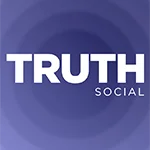 Trump Media & Technology Group today reported a $58.2M net loss on $4.1M in 2023 revenues, a disclosure that drove its stock price down 22.6 percent to $47.96.
Trump Media & Technology Group today reported a $58.2M net loss on $4.1M in 2023 revenues, a disclosure that drove its stock price down 22.6 percent to $47.96. Barry Pollack, an attorney at Wall Street’s Harris St. Laurent & Wechsler, has registered Julian Assange as a client with the Justice Dept. “out of an abundance of caution.”
Barry Pollack, an attorney at Wall Street’s Harris St. Laurent & Wechsler, has registered Julian Assange as a client with the Justice Dept. “out of an abundance of caution.”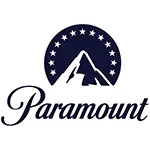 Paramount Global to slash 800 jobs in what chief executive Bob Bakish calls part of an effort to “return the company to earnings growth"... Rolling Stone editor-in-chief Noah Shachtman is exiting at the end of the month due to disagreements with chief executive Gus Wenner over the direction the magazine is taking... The New York Times broke the $1 billion barrier in annual revenue from digital subscriptions in 2023... Press Forward is investing more than $500 million to strengthen local newsrooms.
Paramount Global to slash 800 jobs in what chief executive Bob Bakish calls part of an effort to “return the company to earnings growth"... Rolling Stone editor-in-chief Noah Shachtman is exiting at the end of the month due to disagreements with chief executive Gus Wenner over the direction the magazine is taking... The New York Times broke the $1 billion barrier in annual revenue from digital subscriptions in 2023... Press Forward is investing more than $500 million to strengthen local newsrooms.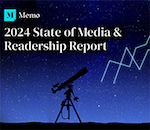 The majority of news articles are read within the first three days of publication, according to a recent report.
The majority of news articles are read within the first three days of publication, according to a recent report.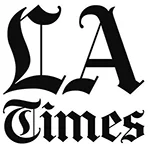 The Los Angeles Times gives pink slips to 115 people or 20 percent of its newsroom staff... TIME is also laying off about 30 employees, which is approximately 15 percent of its editorial staff... The Baltimore Banner, which was launched by Stewart Bainum in 2022 after he failed to buy the Baltimore Sun, added 500 subscribers per day in the three days following Sinclair Broadcast Group's deal to purchase the Sun.
The Los Angeles Times gives pink slips to 115 people or 20 percent of its newsroom staff... TIME is also laying off about 30 employees, which is approximately 15 percent of its editorial staff... The Baltimore Banner, which was launched by Stewart Bainum in 2022 after he failed to buy the Baltimore Sun, added 500 subscribers per day in the three days following Sinclair Broadcast Group's deal to purchase the Sun.


 Have a comment? Send it to
Have a comment? Send it to 
No comments have been submitted for this story yet.